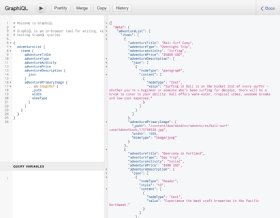
Fotolia
Adobe releases headless commerce developer tools
At its developer conference, Adobe debuts Experience Manager features to enable faster headless e-commerce deployments and GraphQL functionality for content personalization.
Adobe added features to Experience Cloud that make headless commerce apps more straightforward to deploy as well as GraphQL for more precise content personalization.
The features were announced Monday at the Adobe Developers Live virtual conference. They give users of Adobe Experience Manager -- Experience Cloud's content management service -- closer connections between content and e-commerce.
GraphQL, first developed by Facebook, is an open source query language and manipulation tool that polls repositories for personalized content. It has become a commonly requested feature among Adobe Experience Cloud app developers because it's become their dominant tool for app content calls, said Haresh Kumar, Adobe head of strategy and product marketing for Experience Manager.
Like Facebook's original graph search, GraphQL explores the relationships between single pieces of content, and connects them similarly to how Facebook connects relationships between people, Kumar said. It returns relevant, precise results in content calls, and also can return more of it in a single query.
Adobe also released Content Fragment Editor, which gives marketers low-code keys to content systems so they can update reusable content chunks that show up in apps. The updates get published after developer approval.
The features are part of a bigger movement to make headless commerce deployments work more smoothly, said Gartner analyst Colin Reid. The problem with the developer-heavy model is that it takes not just developers to match personalized content to digital buyers, but also many business users across the enterprise.
"The challenge for organizations is to bridge that gap from business non-technical to highly technical, back to business non-technical," Reid said. "The user experience is fractured."
Headless commerce grows in popularity
Headless commerce decouples the front end -- what customers see when they buy something -- from the back-end content repository. That model gives developers a quicker path to support new devices their customers use. As such, it appeals to users deep-pocketed enough to have developer resources.

"If you think about a mobile app, if you think about a watch or any other touchscreen, none of these have browsers," Kumar said. "Headless architecture [enables you] to create once and reuse it in all these different forms. It makes omnichannel easier."
Headless commerce is known as a model for creating and supporting e-commerce apps, championed by developer-centric tech vendors such as Acquia.
While the capability to create headless commerce deployments was previously available in Experience Cloud, Adobe hopes to simplify it and break down bottlenecks with the new features, Kumar said. They come as part of an update to the Adobe Commerce Integration Framework, a microservices bundle whose current incarnation was released in partnership with e-commerce vendor Magento just prior to Adobe's acquisition of it. Salesforce also plans to support simplified headless commerce.
More information on these Adobe Experience Manager tools can be found on Adobe's website. Pricing information was not made available.








